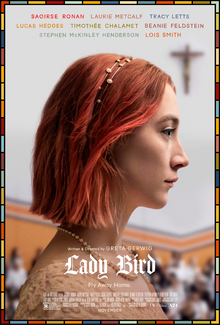

Orange dots are floating around the screen. ‘Our lives are filled with distraction, filled with stimulation’, you hear the Headspace co-founder Andy Puddicombe saying. ‘Imagine if there were a way to slow things down, for our mind to unwind and our body to let go of our stress’.
The Headspace Guide to Meditation is an eight-part meditation guide for anyone who either wants to try it out or is already better acquainted with the practice of meditation and on the search for new techniques. The guide wants to familiarize its audience with meditation, aiming to help those who try it out to become more present, less distracted, bring more enjoyment to their lives, and connect deeper with the people they care about. In case you choose not only to listen but also to watch, you are provided with a consistent but dynamic animation, always different from the previous episode and somehow calming, but also interesting.
‘Explore the mind and discover how meditation can benefit us in our lives’, says Puddicombe in the first episode. This episode explains the structure of the meditation guide: Every episode introduces the viewer to a different technique of meditation, fitting to a specific situation. Puddicombe narrates each episode, talking for around half of each episode about meditation, why it is good for the body and the mind, and why it doesn’t always have to be perfect. With step-to-step instructions and a short, guided meditation at the end of every episode, it is ensured that one can practice what was just learned in theory.
The techniques taught in the various episodes are versatile and deal with all kinds of topics, starting with ‘letting go’ in episode two, in which one learns how to remove ‘the weight on one’s shoulders’ by using the technique of visualization. Other episodes cover the handling of stress, pain, and anger, but also – at the risk of sounding cheesy – how to learn to love life again. The guide ends with an episode about mindfulness and how beneficial it can be for exploring one’s full potential.
Moreover, Puddicombe does not just explain techniques, his guide is bringing forward some important messages as well. First of all, that meditation is not about ‘doing it right’, especially not when trying it out the first few times. It is also no magical healing trick. It is a commitment, and not something one does only once or twice. To experience any benefits from meditating, one has to do it regularly. It is a skill, and as (in particular) psychology students know: a skill needs to be strengthened by repeating it over and over again. Especially if meditation doesn’t come easily to you or you don’t feel like it’s doing anything for you, it is important to keep going for a while longer. Practice will make ‘perfect’.
Another lesson this guide teaches is that meditation isn’t about controlling your mind or somehow changing it. Instead, it is about focusing your energy, attention, and thoughts, both in a present as well as a relaxing way. And there is no ‘one way to do it’. You don’t have to do it alone or need to sit in a ‘cool’ yogi position either, you can lay down or sit on the couch, keep your eyes closed or look out of the window (or at the visualizations at the screen). Whatever works for you is the right way to go.
Tied directly to this, the next point should really be taken into consideration. This guide introduces eight different techniques, ‘styles’ if you will, and you might not like all of them. That is fine too, even just finding one or two that work for you can help immensely if done regularly. Meditation is very personal, and you can only benefit from it if you find out what helps you personally the most.
The last remark could be especially interesting for people who think ‘But I don’t want to think about myself and my own feelings all the time’. While a part of mediation is about examining your own thoughts and feelings, that’s not all of it. Meditation can help with imagining how other people would think and feel and thereby build compassion and empathy, for others but also for yourself. Most people can be quite critical and judgmental – towards themselves and others. Meditation can help to reduce these attitudes and focus on healthier thoughts.
Although I had already practiced meditation a little before this guide, I felt like a beginner when watching it. While some techniques were known to me, I learned quite a bit more about myself and meditation while following this guide. Whether you are already familiar with meditation or not – and especially if you never thought of trying it out before – the Headspace Guide to Meditation will not be a waste of time.
Directed by: Devin Clark, Gabriel de Bruin, and Katy Wang
The Headspace Guide to Meditation is now available on Netflix

Orange dots are floating around the screen. ‘Our lives are filled with distraction, filled with stimulation’, you hear the Headspace co-founder Andy Puddicombe saying. ‘Imagine if there were a way to slow things down, for our mind to unwind and our body to let go of our stress’.
The Headspace Guide to Meditation is an eight-part meditation guide for anyone who either wants to try it out or is already better acquainted with the practice of meditation and on the search for new techniques. The guide wants to familiarize its audience with meditation, aiming to help those who try it out to become more present, less distracted, bring more enjoyment to their lives, and connect deeper with the people they care about. In case you choose not only to listen but also to watch, you are provided with a consistent but dynamic animation, always different from the previous episode and somehow calming, but also interesting.
‘Explore the mind and discover how meditation can benefit us in our lives’, says Puddicombe in the first episode. This episode explains the structure of the meditation guide: Every episode introduces the viewer to a different technique of meditation, fitting to a specific situation. Puddicombe narrates each episode, talking for around half of each episode about meditation, why it is good for the body and the mind, and why it doesn’t always have to be perfect. With step-to-step instructions and a short, guided meditation at the end of every episode, it is ensured that one can practice what was just learned in theory.
The techniques taught in the various episodes are versatile and deal with all kinds of topics, starting with ‘letting go’ in episode two, in which one learns how to remove ‘the weight on one’s shoulders’ by using the technique of visualization. Other episodes cover the handling of stress, pain, and anger, but also – at the risk of sounding cheesy – how to learn to love life again. The guide ends with an episode about mindfulness and how beneficial it can be for exploring one’s full potential.
Moreover, Puddicombe does not just explain techniques, his guide is bringing forward some important messages as well. First of all, that meditation is not about ‘doing it right’, especially not when trying it out the first few times. It is also no magical healing trick. It is a commitment, and not something one does only once or twice. To experience any benefits from meditating, one has to do it regularly. It is a skill, and as (in particular) psychology students know: a skill needs to be strengthened by repeating it over and over again. Especially if meditation doesn’t come easily to you or you don’t feel like it’s doing anything for you, it is important to keep going for a while longer. Practice will make ‘perfect’.
Another lesson this guide teaches is that meditation isn’t about controlling your mind or somehow changing it. Instead, it is about focusing your energy, attention, and thoughts, both in a present as well as a relaxing way. And there is no ‘one way to do it’. You don’t have to do it alone or need to sit in a ‘cool’ yogi position either, you can lay down or sit on the couch, keep your eyes closed or look out of the window (or at the visualizations at the screen). Whatever works for you is the right way to go.
Tied directly to this, the next point should really be taken into consideration. This guide introduces eight different techniques, ‘styles’ if you will, and you might not like all of them. That is fine too, even just finding one or two that work for you can help immensely if done regularly. Meditation is very personal, and you can only benefit from it if you find out what helps you personally the most.
The last remark could be especially interesting for people who think ‘But I don’t want to think about myself and my own feelings all the time’. While a part of mediation is about examining your own thoughts and feelings, that’s not all of it. Meditation can help with imagining how other people would think and feel and thereby build compassion and empathy, for others but also for yourself. Most people can be quite critical and judgmental – towards themselves and others. Meditation can help to reduce these attitudes and focus on healthier thoughts.
Although I had already practiced meditation a little before this guide, I felt like a beginner when watching it. While some techniques were known to me, I learned quite a bit more about myself and meditation while following this guide. Whether you are already familiar with meditation or not – and especially if you never thought of trying it out before – the Headspace Guide to Meditation will not be a waste of time.
Directed by: Devin Clark, Gabriel de Bruin, and Katy Wang
The Headspace Guide to Meditation is now available on Netflix



